 One of the longest running features on IPWatchdog is our annual “wishes” article. Each year I invite a panel of industry thought leaders with diverse backgrounds to make patent and/or intellectual property related wishes for the new year. In addition to the wishes below, Marla Grossman, a partner with American Continental Group, wrote a full length article detailing her wishes from K Street, so please be sure to check out that article as well.
One of the longest running features on IPWatchdog is our annual “wishes” article. Each year I invite a panel of industry thought leaders with diverse backgrounds to make patent and/or intellectual property related wishes for the new year. In addition to the wishes below, Marla Grossman, a partner with American Continental Group, wrote a full length article detailing her wishes from K Street, so please be sure to check out that article as well.
This year our panel has a diverse variety of wishes. We see the usual wishes relating to patent eligibility and the abstract idea exception, with a reference to a Moody Blue’s song to make the point. We also see wishes relating to inter partes review (IPR) and the biotech industry, and a wish for uniformity at the Federal Circuit. There is a wish for federal trade secret legislation to finally pass, and a reminder that elections matter, even for us in the intellectual property space, a topic that we will return to quite a lot during 2016 here at IPWatchdog.com. We also see several exasperated wishes, hoping for solutions to the real problems facing the industry rather than the same old tired cries for “reform” that would benefit only a handful of large entities while harming practically everyone else.
As for my wishes, stay tuned!
[Varsity-1]
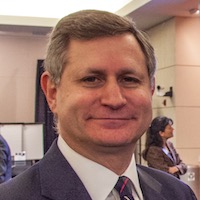 Manny Schecter
Manny Schecter
Chief Patent Counsel, IBM
I wish for the elimination of the abstract idea exception to patent subject matter eligibility. This judicially created doctrine has been perplexing the patent community, since, well, (practically) forever! Many decades observing the pendulum swinging back and forth between relatively permissive (e.g., after State Street Bank) and restrictive (e.g., after Mayo and Alice) regimes leads inevitably to one conclusion: the doctrine simply cannot work. Each iteration recites new buzzwords (remember useful, concrete, tangible, preemption, blah, blah, blah) but none of them has ever resulted in the clarity we all need and desire. Inventors and their competitors, examiners and the courts – none of them has a clue how to predictably assess a claimed invention under the doctrine. Perhaps worse, they do not even agree with each other! Not that I blame anyone – they are all doing their utmost to cope with a doctrine that has proven to be unworkable in practice. The result is utter chaos.
It is time for the chaos induced by the abstract idea churn to stop. How? I do not really care how – I just know it must or we will go on wasting tremendous amounts of legal resource testing the limits of the doctrine and – like the Moody Blues’ Nights in White Satin – never reaching the end (yes, I am showing my age). I would be pleased to see the Supreme Court do away with its own unworkable doctrine, but because the Court has repeatedly declined to do so, I am not optimistic. Given the large number of decisions invalidating patents as abstract, the Federal Circuit (and perhaps the Supreme Court) will have opportunities to bring some clarity to the doctrine and I sincerely hope that this occurs.
Even as judicial consideration of this issue moves forward, my wish for 2016 is that champions in Congress and the Administration come together with business community leaders and intellectual property experts to find a path to untangle this knot in the name of preserving America’s competitive edge.
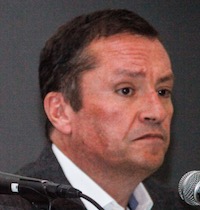 Erich Spangenberg
Erich Spangenberg
CEO at nXn Partners
Always fun to fantasize about “what could be.” Here are my three patent wishes for 2016:
The end of “evergreening.” Pharma companies have been using very flimsy patents for years to artificially extend the government granted monopoly pricing on life-saving drugs. Patents for “speckled pills” and “rubber stoppers?” Seriously? It would be fantastic if one or two examiners from the right patent office technology center or a couple of PTAB judges would come forward and say “enough.” The practice could be stopped cold. All of our moms and dads and aging relatives who are absolutely clueless as to how the patent system works, but are smart enough to know something is wrong, would be very grateful. If any of examiners or judges do want to come forward and say enough, I could probably find a major news outlet to pick up and run with the story.
A new coalition to the save the patent system: Google, the pharmaceutical industry, and others have formed coalitions intent on more misguided patent reform that would boost their bottom lines at the expense of everyone else—and it now proudly has a name, “efficient infringement.” I’d love to see a coalition of big corporations, universities, small companies, and inventors that know that “what’s good for Google” is not necessarily good for them or good for America. Catchy coalition names that make fun of Google but capture the gravity of the issue will be accepted.
A focus on the real “problem:” The patent system has been under heavy attack from well meaning but seriously misinformed members of the judicial, legislative, and executive branches of government. Let’s hope they all give this a well deserved rest. There is an area that needs attention: litigation abuse. We don’t need to weaken the patent system to stop scam artists or those (both plaintiffs and defendants) engaging in bad behavior in the courthouse. I’d love to see government focus on this problem, and leave the rest of the patent system alone in 2016. Let’s take a really deep breath, pause, and understand the impact of changes already made—oh, and focus in on the real problem.
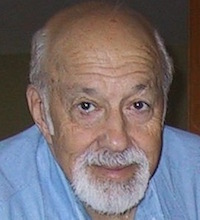 Martin Goetz
Martin Goetz
The Father of Third Party Software
Regarded as the first person ever awarded a “software patent”, U.S. Patent No. 3,380,029
My wish for 2016 is that the world eliminates calling or classifying a patent as a “software patent”.
Actually, software was never classified in the U.S. Patent Classification System which has over 400 classes and thousands of sub-classes. As of January 2013 the US System was replaced with the Cooperative Patent Classification (CPC). CPC has 9 Sections, and hundreds of Classes, Sub-classes, Groups and Sub-groups. A patent application is classified based on the subject to which the invention relates and not how the invention is implemented. For a full understanding of how a patent is classified see US and International Patent Classification.
As I’ve argued for many years, one only gets a patent on an invention. How you implement the invention via software, circuity, or smoke and mirrors is irrelevant as long as there is an adequate disclosure for one skilled in the art. The current Patent Office policy is not to invalidate a patent even if the disclosure is not the best mode in implementing the invention. So a patent application can show a wiring diagram as part of the Specification, even though software may be the preferred way to implement the invention.
It is also a fact that according to the 2013 GAO (US Government Accounting Office) Report “By 2011, patents related to software made up more than 50% of all issued patents”. In my article “Lifting the Fog on ‘Software Patents’ – Eliminate that Meaningless Term”, I discuss the fact that software implementation is more and more ubiquitous and is only a means to an end.
So for the Courts, the media or IP lawyers to describe and categorize an invention that receives a patent as a software patent — rather than its official classification—really does not make sense.
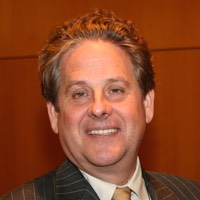 Bob Stoll
Bob Stoll
Partner, Drinker Biddle
Former Commissioner for Patents, USPTO
Elections matter. That is why 2016 could set the stage for a new direction in patent policy. We have seen several recent attacks on patent rights. The Administration and the Hill have been so ginned up against “patent trolls”, whoever they might be, that both branches have been considering policies that could limit the rights of all plaintiffs. Pundits have been erroneously opining, without any real data, that patents do not add value, causing problems here and havoc for our patent holders abroad. And activist courts have been limiting patent subject matter eligibility for the first time in 30 years in contradistinction to established practice and to statutes and the Constitution.
Just as we are seeing the dissatisfaction of the electorate at the status quo on other issues and the emergence of unconventional candidates for President from some quarters, so too are we witnessing dissatisfaction from the patent user community about what is happening to patent rights. But these patent problems are energizing the patent community and leading to unusual coalitions.
The High Tech industry and the Biotech/Pharma industries are presenting a unified front against the recent limitations on subject matter eligibility. They are supporting initiatives to reverse the current directions in all of the major user groups through development of possible legislation if the courts do not modify their draconian positons.
Patent owners of all stripes are carrying their messages directly to both the Legislative and Executive branches about the importance of a well-functioning secondary market for patents with proper safeguards. They have been effective in communicating that a surgical scalpel should be used in patent reform and not a weed wacker.
The pendulum is already beginning to swing back towards our historical roots that recognize the importance of strong patent protection as an engine for economic growth and I predict that 2016 will set the stage, with modest improvements for patent holders, for more sweeping changes in 2017.
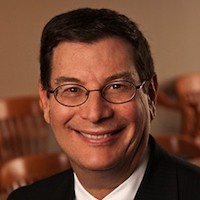 Stephen Kunin
Stephen Kunin
Partner, Oblon, McClelland, Maier & Neustadt, L.L.P.
Former Deputy Commissioner for Patent Examination Policy, USPTO
My main wish for 2016 is that the historical patent law pendulum begin to swing back to a more balanced approach to the tension between patent owner rights and those of accused infringers. Today the direction of movement seems to be swung over towards a patent system based on weaker patent rights. It is now more difficult to obtain and enforce patent rights. Which may not necessarily be a good thing in order to promote the progress of the useful arts. Sections 101 (subject matter eligibility), 103 (non-obviousness) and 112 (written description, enablement and claim definiteness) now present significant hurdles to obtain patents and make it easier to invalidate them. Injunctions and enhanced damages are more difficult to obtain and attorney fee awards are now more common. To remain a world leader we need to make sure that we are adequately promoting and protecting innovation. The Congress, Admininstration and the Courts act slowly. My wish is to see 2016 as a year in which we see a ray of hope of change for the better.
1. My first wish for 2016 is an old one that went unfulfilled this year: clarity surrounding patent eligibility. My preference is for Congress or the Supreme Court to scotch Alice and the abstract-idea test in its entirety. But any rules-based approach that innovators, litigants, and judges can apply with more certainty is preferable to the opaque status quo. My hunch is that if any institution will provide more clarity on the limits of Section 101, it will be the Federal Circuit. A subsidiary wish is that CAFC is up to the job.
2. During IPRs, I wish the PTO would either stop giving claims their broadest reasonable interpretation or authorize patentees to amend their claims as of right. The BRI coupled with what has been in practice an illusory opportunity to amend is both unfair and bad public policy.
3. I wish the Federal Circuit would act consistently. It is well known at present that case outcomes are highly dependent on the selection of panelists. But a party shouldn’t win or lose because they’ve drawn Judge Newman instead of Judge Prost. The (accurate) perception that the luck of the Federal Circuit draw rather than law and precedent determines case outcomes sows uncertainty, confusion, and discontent.
4. I wish the Supreme Court would clarify that a district court may, in its congressionally conferred discretion, treble damages without finding wilfulness. I’m cautiously optimistic that this wish, at least, will come true.
5. I wish the Unified Patent Court every success in 2016 and beyond. Competition for R&D investments and the patent litigation it fuels is a healthy force for innovation everywhere.
A final, non-patent related wish is for you and yours to have a happy, healthy, and prosperous 2016!
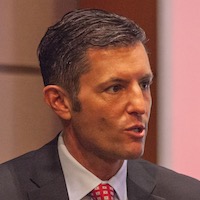 Louis Foreman
Louis Foreman
CEO, Enventys
Publisher, Inventors Digest
Creator & Executive Producer, Everyday Edisons
It’s that time of year again when we push back from the table and reflect on all that has happened over the past 12 months. 2015 has had moments of good and bad, however, from a patent reform perspective, it strangely seems a lot like 2014. Haven’t we learned anything yet?
In 2014, the IP community was able to stop Congress from doing irreparable damage to the patent system, and it seemed like everyone understood how critical strong patent rights were to innovation, job creation, and economic prosperity. Yet here we are again in 2015 having the same discussions, engaging in the same debates, and hoping that the coming year isn’t a repeat of the last two.
This month, the Intellectual Property Owners Education Foundation (IPOEF) celebrated Jay Walker as the Inventor of the Year. We recognized Herb Wamsley as the distinguished IP Professional, and recognized 5 young adults who created original videos explaining the importance of patents. These videos were encouraging, not only in their message, but because if a child understands how important a patent right is, then perhaps we can educate our lawmakers as well.
 Alden F. Abbott
Alden F. Abbott
Rumpel Senior Legal Fellow
Deputy Director, Meese Center for Legal and Judicial Studies
The Heritage Foundation
1. Congressional Enactment of Civil Trade Secret Legislation
At the end of 2015, bipartisan bills establishing a federal civil private right of action for victims of trade secret theft were under consideration in both Houses of Congress. Given the seriousness of trade secret theft in the globalized high tech environment, congressional enactment of carefully calibrated trade legislation in 2016 would prove beneficial to the American economy. (I recently discussed this topic at greater length in IP Watchdog.)
Appropriate federal trade secret legislation should be informed by two overarching principles.
First, to promote uniformity in application and benefit from state law experience, federal legislation should to the greatest extent possible draw upon the language of the Uniform Trade Secrets Act (adopted in various forms by most states). Federal legislation should not displace state law – it should complement it in a way that strengthens the economy while benefiting from state experiences in applying their textually-similar trade secret provisions. (This approach is far from unique – federal and state trademark protection peacefully coexist.)
Second, federal legislation should provide for expedited ex parte relief, in the form of a federal court-ordered seizure of property from the party accused of misappropriation, if necessary, to prevent dissemination of the trade secret. Legislative language should ensure that appropriate relief is granted in a manner that protects the legitimate rights of all interested parties.
In sum, while no panacea, the enactment of measured, carefully-tailored federal trade secret legislation would provide a flexible new tool to victims of trade secret theft, help American businesses secure some of their most valuable assets, and at least somewhat reduce the burden of trade secret theft to the business community and the overall American economy.
2. Federal Leadership to Protect Patent Rights Overseas – and at Home
In a recent article, former Patent Commissioner Bob Stoll correctly highlighted a disturbing trend:
“China and South Korea are quietly implementing antitrust policies that may require U.S. leaders in the industry to cheaply license their portfolios to domestic competitors in those countries. These types of actions are taking place under the guise of ensuring that technology standards are properly implemented and available in the global marketplace. However, when taken together, they signal a concerning trend by protectionist-minded foreign governments to undermine American patent rights, putting American companies at risk.”
Unfortunately, the attack on the rights of standard essential patent (SEP) holders is not just limited to East Asia. Indeed, it draws aid and comfort from public statements and actions of senior U.S. Government antitrust officials (see my article here), which not only support limiting returns to SEPs, but more generally express a philosophy that is highly skeptical of patents (a philosophy that departs from the former bipartisan consensus in support of a robust patent system). That philosophy the key role strong patent rights play in promoting technological innovation and economic growth. It is my hope that, in 2016, the U.S. Government will revisit its thinking about patents in light of a growing law and economics literature that underscores the value of strong patent regimes to the economy. As one aspect of such a revision, the federal antitrust agencies should strongly endorse the position that they will not challenge the efforts of patent holders to maximize returns to their property rights, and should readopt the pro-patent position of prior administrations (the Clinton Administration, for example). Once this is done, the U.S. Government should then aggressively promote their new enlightened patent policies in major speeches, in negotiations with individual foreign governments, and in presentations to multinational bodies, such as the International Competition Network and the European Commission. Foreign patent policies would not change overnight, but U.S. Government leadership could at least get the process started.

![[IPWatchdog Logo]](https://ipwatchdog.com/wp-content/themes/IPWatchdog%20-%202023/assets/images/temp/logo-small@2x.png)


![[Advertisement]](https://ipwatchdog.com/wp-content/uploads/2024/04/Patent-Litigation-Masters-2024-sidebar-early-bird-ends-Apr-21-last-chance-700x500-1.jpg)

![[Advertisement]](https://ipwatchdog.com/wp-content/uploads/2021/12/WEBINAR-336-x-280-px.png)
![[Advertisement]](https://ipwatchdog.com/wp-content/uploads/2021/12/2021-Patent-Practice-on-Demand-recorded-Feb-2021-336-x-280.jpg)
![[Advertisement]](https://ipwatchdog.com/wp-content/uploads/2021/12/Ad-4-The-Invent-Patent-System™.png)







Join the Discussion
4 comments so far.
staff
January 5, 2016 12:50 pmLike Grossman, some of the other panelist on this article appear to be advocating for large multinationals and perhaps China…
http://www.acg-consultants.com/
It is interesting how their site has a tag for a Chinese version. Their interests are not in line with America’s -certainly not American inventors, or for that matter any inventor.
Patent reform is a fraud on America. These bills will not do what they claim they will. What they will do is help large multinational corporations maintain their monopolies by robbing and destroying their small entity and startup competitors (so it will do exactly what they paid for) and with them the jobs they would have created. For the last several years now they have been ransacking and looting small entities taking everything they can carry. They have already damaged the US patent system so that property rights are teetering on lawlessness. These bills will only make it harder and more expensive for small firms to get and enforce their patents. Without patents we cant get funded. In this way large firms are able to play king of the hill and keep their small competitors from reaching the top as they have. Yet small entities create the lion’s share of new jobs. According to recent studies by the Kauffman Foundation and economists at the U.S. Census Bureau, “startups aren’t everything when it comes to job growth. They’re the only thing.” Meanwhile, the large multinationals ship more and more American’s jobs overseas. These bills are a wholesale destroyer of American jobs.
For a list of true reform measures, please see…
https://aminventorsforjustice.wordpress.com/category/our-position/
For more information please visit us at https://aminventorsforjustice.wordpress.com/
or, contact us at [email protected]
Night Writer
January 4, 2016 12:00 pmIt occurs to me too that there is push-back on the patent destruction and so the big internationals figure that they will push for trade secret right now and come back around to take another punch at weak-kneed patent system.
(Note too that Google and others have been in trouble before for price collusion of employees and that trade secret is a great way to lock up employees so they can’t move to another employer.)
Night Writer
January 4, 2016 11:58 amLouis Foreman>>Yet here we are again in 2015 having the same discussions, engaging in the same debates, and hoping that the coming year isn’t a repeat of the last two.
I think this tells the story best. The never ending tide of K street money from Google and others to get trade secrets and end patents. Trade secret protection is just another weaking of the patent system. It is — in effect — saying our patent system is so weak that now we are just going to hide everything. (And, if anyone advocates for trade secrets without a lengthy discussion of how it will affect employment contracts, do not trust them.)
Bruce Kanuch
January 4, 2016 08:34 amAmend to Martin’s comments regarding “invention”.